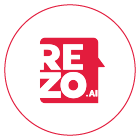
Power of Debt Collection Software: Eliminating Write-Offs and Boosting Recovery Rates

Power of Debt Collection Software: Eliminating Write-Offs and Boosting Recovery Rates


Debt collection can be challenging, especially when dealing with write-offs. A write-off refers to a situation where a lender determines that a debt is uncollectible and removes it from their record as a loss. It means that the creditor has given up on attempting to collect the amount owed and has decided to take a financial loss rather than continue to pursue the debt. Write-offs can have a significant negative impact on a company’s bottom line. Targeting write-offs is a useful strategy to increase collections and decrease losses if the correct debt collection product is used.
What are Write-Offs?
A write-off is the elimination of assets or liability from an organization’s financial accounts. As assets become unusable, they are written off. Financial institutions deploy write-off accounts when all available collection means have been used. The borrower cannot repay the loan, and the organization determines that the debt is unlikely to be recovered.
Why do you need to deal with Write-Offs?
Write-offs can significantly impact a loan lending organisation, including loss of revenue, damage to reputation, and regulatory compliance issues. To mitigate these risks, organisations must improve their underwriting standards and monitor borrower behaviour more closely, which can be easily done with the help of debt collection software to reduce the likelihood of defaults.
- First and foremost, it represents a loss of revenue for the organization. Writing off debt means that the creditor will no longer receive the full amount they had expected.
- In addition to the loss of revenue, a write-off can also impact the organization’s financial health. If the organization has a high percentage of write-offs compared to its overall lending portfolio, it may signal to investors or lenders that the organization is taking on too much risk or has poor underwriting standards. This can lead to a decline in the organization’s reputation and creditworthiness.
Hitting the Hardest Bucket, viz., Write-offs with Rezo
To target write-offs effectively, it is important to understand the reason for the write-off and tailor your collection approach accordingly. The “Collection Product” classifies borrowers based on their risk of missing payments in the future by analyzing each borrower’s profile and the reasons for payment delays. The product can predict debtors’ default habits by examining the reasons for late payments. Then, by implementing a multitude of unique and focused client interactions, Rezo’s Collection Product delivers a personalized customer journey for each borrower.
One of the keys to targeting write-offs is to understand why they occur in the first place. There are several reasons why a debt might be written off, including:
- The debtor has declared bankruptcy and cannot repay the debt.
- The debtor has disappeared or cannot be located.
- The debt is very old, and the creditor has given up trying to collect it.
- The debtor has passed away, and there are no assets to collect from their estate.
For example, if the debtor has declared bankruptcy, it is unlikely that any collection efforts will be successful. However, keeping track of the debt and filing a claim with the bankruptcy court if necessary is still important. If the debtor has disappeared or cannot be located, contacting their assets may be necessary to locate them.
If the debt is very old, it may be necessary to use a different collection approach. For example, the creditor may offer a settlement to the debtor in exchange for payment in full, or they may write off a portion of the debt in exchange for payment of the remainder.
When it comes to targeting write-offs, having a debt collection product specifically designed to address these issues can be extremely helpful.
The Technology of Rezo’s Collection Product

The Collection Product comes with the core abilities of Engage AI & Analyse AI to address different aspects of the loan collections and debt recovery lifecycle. The technology of Rezo detects the write-offs before time and deals with them in a required manner.
Engage AI
The collection product offers fully automated and digital communication abilities and the following features:
- Human-like conversation in 10 languages and over 500 dialects
- Digital-first Approach
- Complete Automation
- Al-enabled Voice-Bots and Chatbots
Analyse AI
The collection product of Rezo is AI-enabled to auto-analyze borrowers’ data. This analysis is the key component of the product that categorizes borrowers into pre-delinquent and post-delinquent stages. This allows the organization to adapt and follow customized strategies for each borrower. It comes with the following features:
- Dashboards
For a quick and consolidated picture of the status and results of various collections efforts across multiple stages and channels.
- ML for Data Analysis and Segmentation
To identify trends and patterns in debt types, payment behavior, and customers at a high risk of defaulting on their debt. This information can then create payment reminders and optimize collection efforts.
- Voice-Analytics in Human-Initiated Voice Calls
With voice analytics of the collection product, debt collectors can analyze and interpret the tone, pitch, and other characteristics of the debtor’s voice during a telephonic conversation to tailor their collection approach accordingly.
The Peculiar Feature that Makes the Process More Efficient

The change in borrowers’ contact numbers and addresses creates a vast gap for banks and other financial services companies in contacting their existing borrowers if their new contact details still need to be updated. This information is required to close long ongoing loan accounts.
The Auto tracking feature of The Collection Product closes this gap and streamlines identifying and updating contact details, making it faster, more efficient, and more accurate while adhering to ethics. The feature appends the necessary information and gathers new data points from various sources. The technology follows the loan borrowers’ public digital footprints while adhering to data privacy rules to determine their further or secondary contact information. If these are unavailable, the lender contacts the co-applicants of the loan, the references offered, or the witnesses provided.
Results achieved with Rezo
Write-offs are accounts deemed uncollectible and removed from the lender’s balance sheet. These accounts are typically turned over to a collection agency or sold to a debt buyer for a fraction of their face value. The collection agency or debt buyer then attempts to collect the debt.
The success rate of debt collection from write-offs is typically lower than 0.5%. With the efforts and technology of Rezo, the organizations can increase this collection amount to 2-2.5% increasing the ROI.
Conclusion
Debt collection software can be a game-changer for organizations looking to reduce write-offs and improve recovery rates. Rezo’s Collection Product enables organizations to categorize borrowers based on their risk of missing payments, analyze data to identify trends and patterns, and automate communication and tracking efforts. By taking a targeted approach to debt collection, organizations can significantly reduce the negative impact of write-offs on their bottom line, reputation, and compliance with regulatory requirements.
With the power of debt collection software, companies can recover more outstanding debts and increase their ROI, making it a valuable investment for any organization.
Request a Demo Today- Contact Us
Frequently Asked Questions (FAQs)

Take the leap towards innovation with Rezo.ai
Get started now










